No products in the cart.
Everyone knows plants need sunlight to display their gorgeous foliage to colorful flowers. Still, not everyone is lucky to have a garden filled with trees, and not all outdoor plants can stand in full sun all day as it can scorch the leaves.
So, if you fall into this category, you want plants that can thrive in full sun. Luckily, we are here to help as we have listed some sun-loving plants you can grow in the yard without damaging the foliage.
The Best Sun-Loving Plants That Thrive in Full Sun
Whether you want full-sun plants that are drought-tolerant or can handle some partial shade, we can help. You can even find a low-maintenance plant displayed here.
Not only will they do well in your sunny areas around garden borders, sunny walls, or raised beds they even add color.
So, choose your favorite perennial plants that tolerate the hot afternoon sun.
Azalea is a Shrub That Can Handle Direct Sun
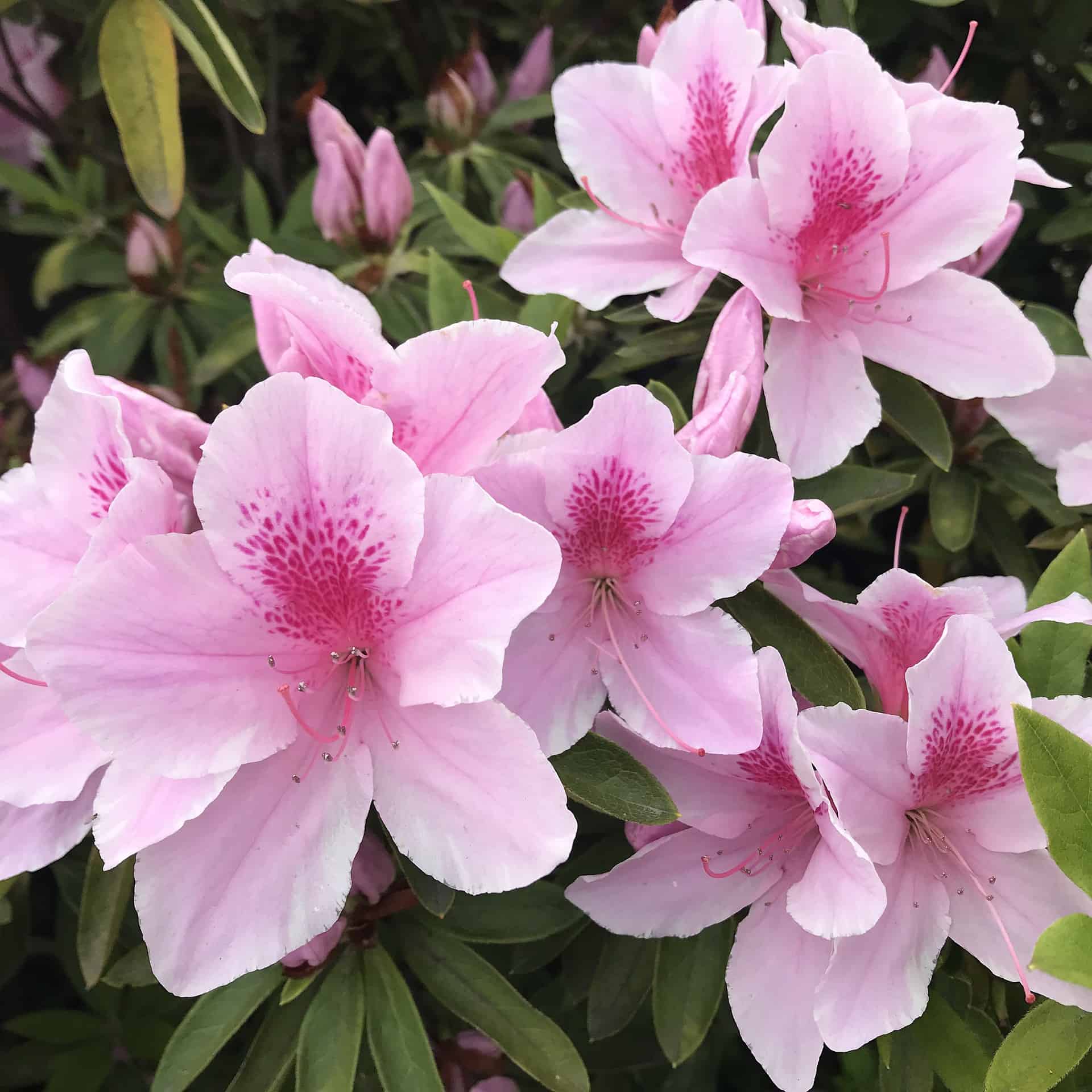
This magnificent flowering shrub has large, showy flowers that attract butterflies and hummingbirds to the garden. The Rhododendron var is a broadleaf evergreen that loves full sun and even shade.
The annual reaches up to six feet tall and grows well in the hardiness zones 5 to 9. You can find wide varieties to use in a low-maintenance landscape. The Azalea thrive in full sun with well-drained soil on the acidic side.
They do not enjoy getting too dry, so keep the soil moist. These spring bloomers give an impressive display of showy blooms that cover the entire plant. It forms a bushy mound with shades of pink or white flowers.
Bearded Iris Are Full Sun Perennials

This showy flowering plant loves growing in well-draining, moist soil. The Iris germanica is an herbaceous perennial that grows up to three feet tall. They grow well in the hardiness zones 3 to 10.
You can plant them in sunny areas and tolerate different soil types, but they prefer being moist as long as it drains well—the Bearded Iris blooms in spring in various colors. You find the plant with white, orange, blue, pink, yellow, and purple flowers.
Iris makes for an attractive display, and they spread slowly with fragrant blooms making for beautiful flowers in vases. You can divide them over time every two years as it helps prevent overcrowding.
Black-Eyed Susan, a Popular Wildflower

Rudbeckia hirta is another herbaceous perennial that reaches three feet tall. They grow well in the growing zones 3 to 7 in full sun. It is a showy wildflower native to Central America, developing quickly from seed heads into young plants.
These full-sun plants self-seed and spread fast, so removing the unwanted seedlings when they sprout in spring is best. Grow Black-Eyed Susan in well-drained soil that is kept moist. The flowers attract bees and butterflies in summer.
The bright yellow flowers with dark brown centers look fabulous in a summer garden.
Bugleweed Makes For Exceptional Ground Cover

The Ajuga reptans is an excellent plant for ground cover displaying its beautiful flowers in a blue-purple hue. It grows best in a sunny spot to reach heights of 9 inches. You can grow them in USDA zones 3 to 10, and it is a low-maintenance plant.
It thrives in medium moisture and looks fabulous on a border or along a walkway. You can add the plant to corners where you need some green foliage. The leafy rosettes spread with time to fill up bare ground.
It starts to flower in spring through to early summer in full sunlight. The small tubelike purple flowers give a showy display and blend in well with the surroundings. In warmer climates, the foliage is evergreen and can also have a purple shade.
Butterfly Milkweed A Drought-Tolerant Plant
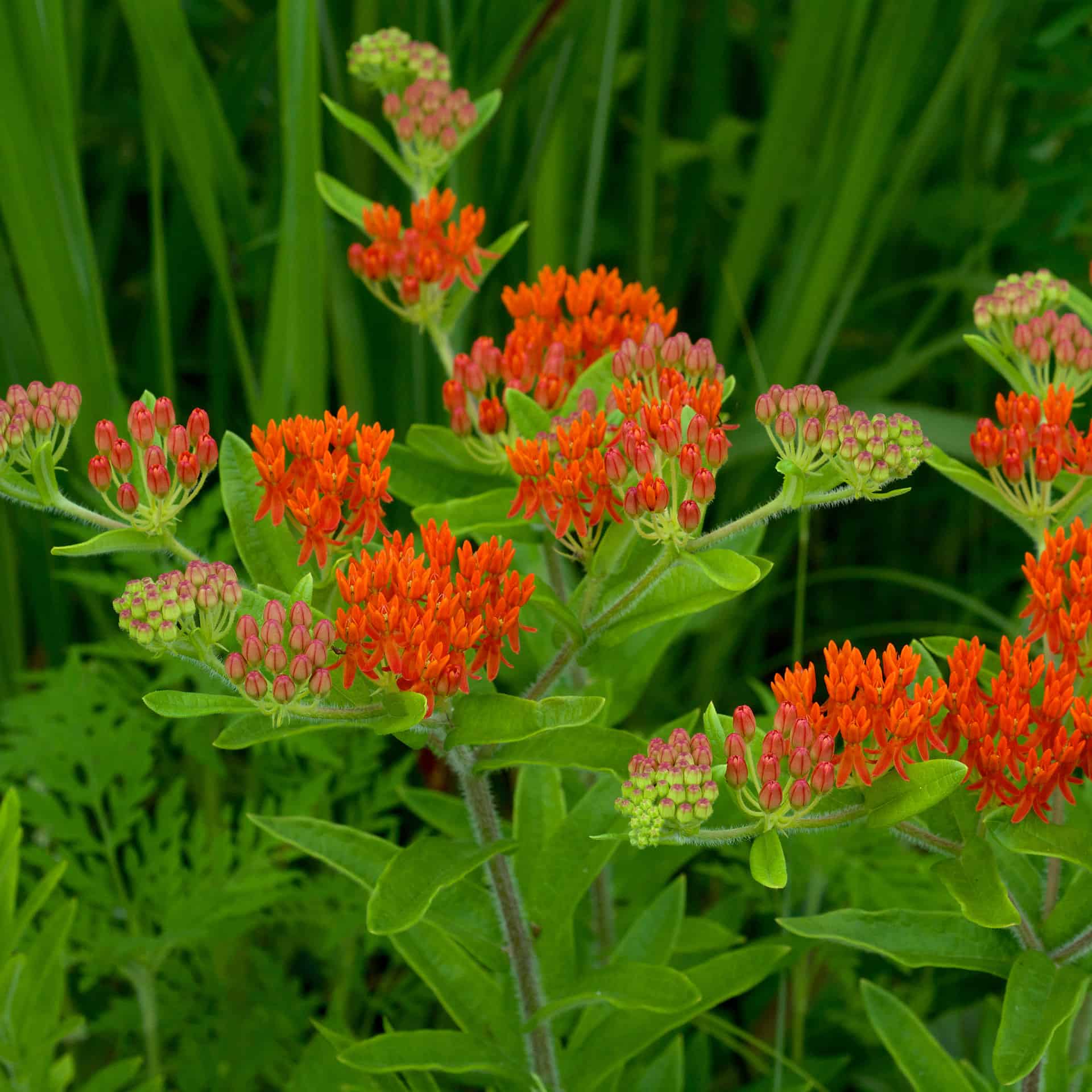
Yes, this outdoor plant attracts pollinators and butterflies love, especially the Monarch loves them. Most parts in the USDA zones 3 to 9 are grown annually. It makes for a beautiful plant reaching heights of 2.5 feet tall.
The native plant is low maintenance and has bright, attractive flowers showy in early to mid-summer. Growing plants like the Butterfly Milkweed are best placed in a spot with enough sun exposure.
The plants are deer resistant, and when established, they are drought tolerant as well. Plant them in well-drained soil, and it is not picky about the soil type.
Coreopsis With Bright Yellow Flowers
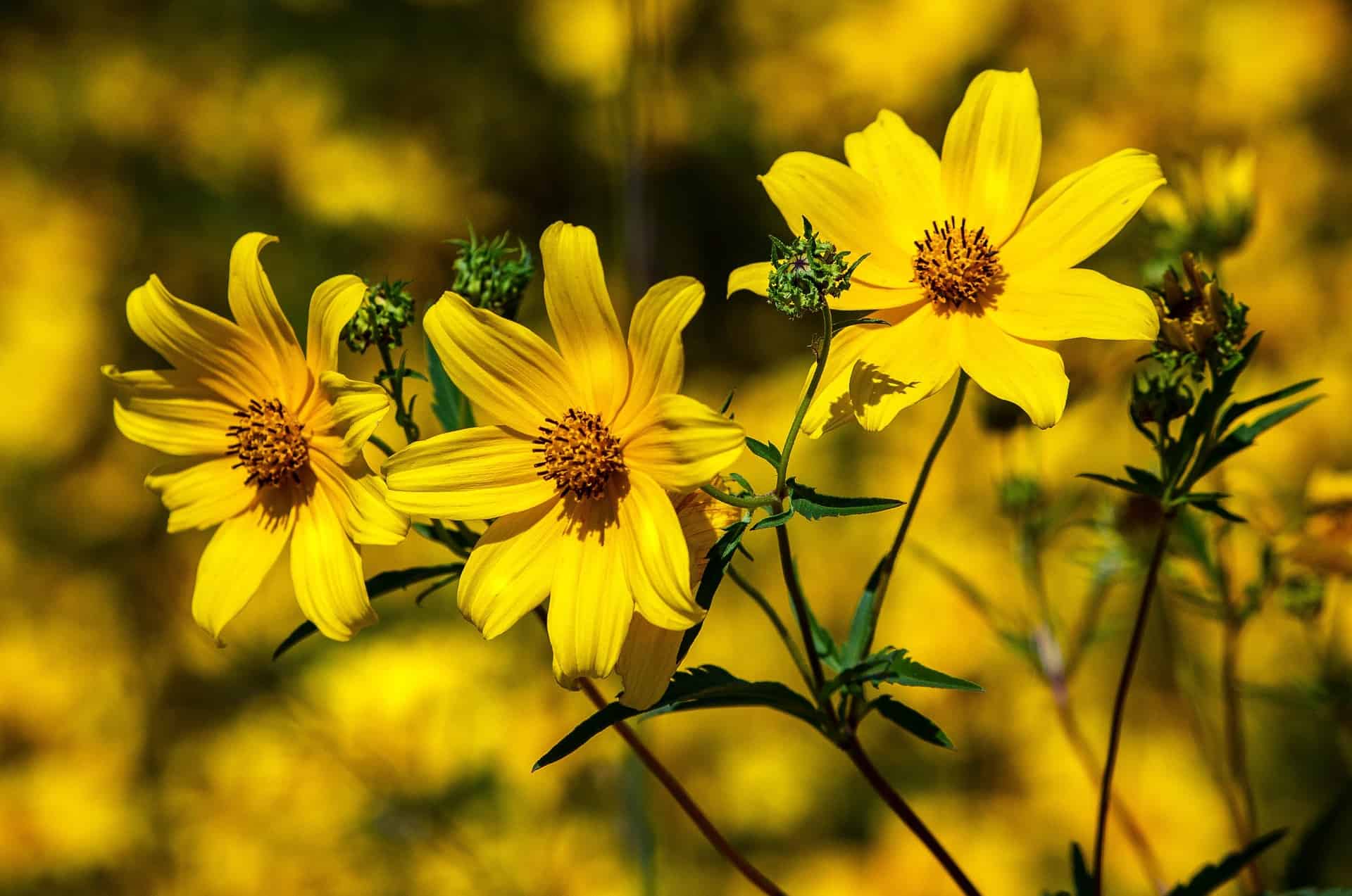
During the summer months, the bright yellow flowers of the Coreopsis lanceolata attract butterflies and other pollinators to the garden. The herbaceous perennial reaches heights of two feet.
It grows well in USDA zones 4 to 9, and several species are available. Compared to other plants, the Coreopsis is also a native plant to the Eastern and Central United States. It has feathery green silvery foliage with yellow flowers.
With these sun plants, you have blooms throughout the summer, adding color to the landscape. These are sturdy plants that are deer resistant and not picky regarding soil. But they do prefer well-draining soil and self-seed.
Creeping Phlox Are Tough Plants
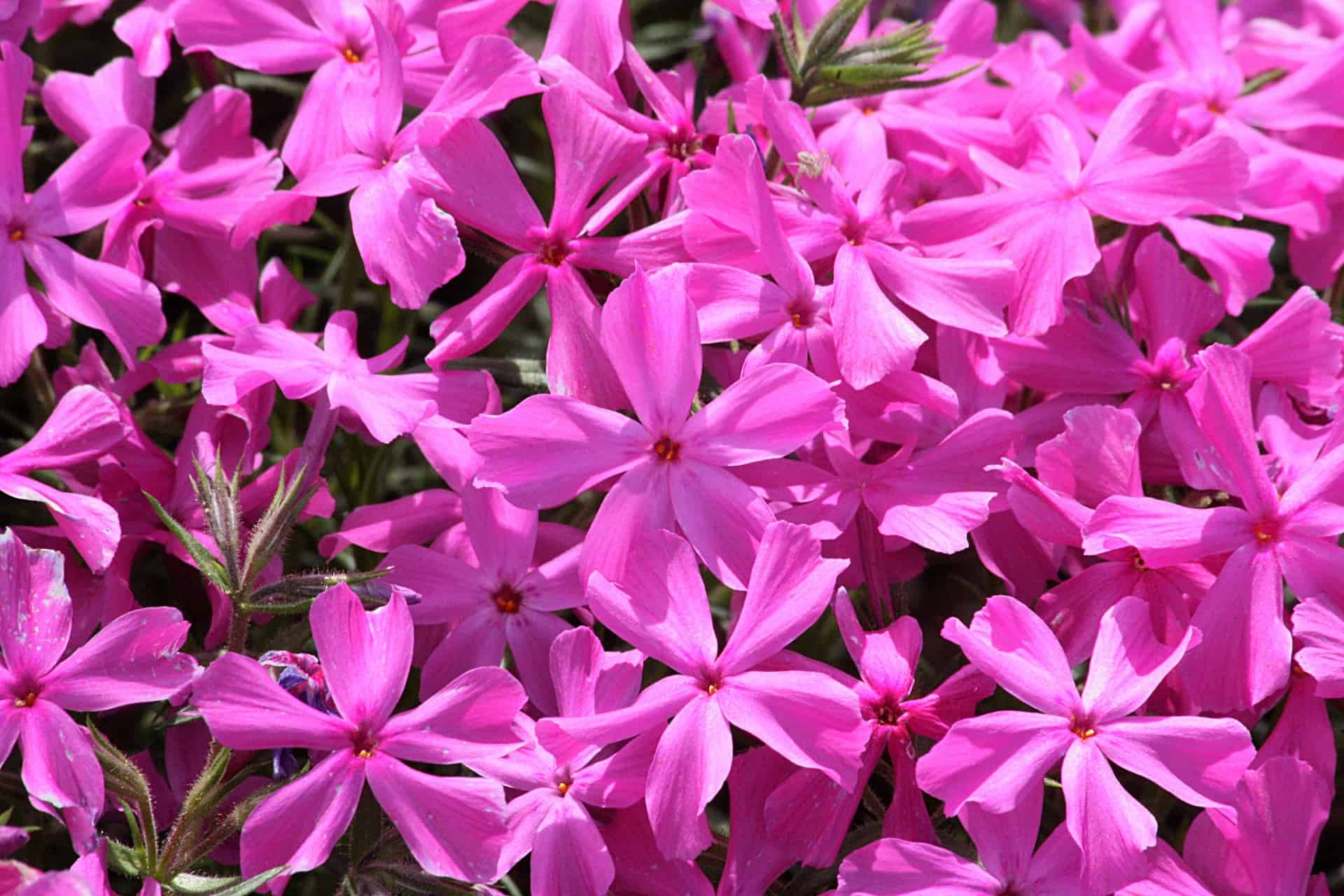
Nothing comes close to the Creeping Phlox for the best sun-loving perennials to grow as a ground cover. You get cheerful blooms in purple or pink flowers. But, in some zones, you need to grow them annually.
In rock gardens, the Creeping Phlox thrive in full sun and can tolerate partial shade. The plant reaches 12 inches tall and is suitable for hardiness zones 5 to 9. So it is still happy if it only gets a little afternoon shade.
The Creeping Phlox forms large masses that work well for ground cover along borders to edges. It also gives you early-season color and produces clusters of purple-pinkish flowers. The leaves remain evergreen in warm to cold weather.
Daffodil With Bright White Blooms
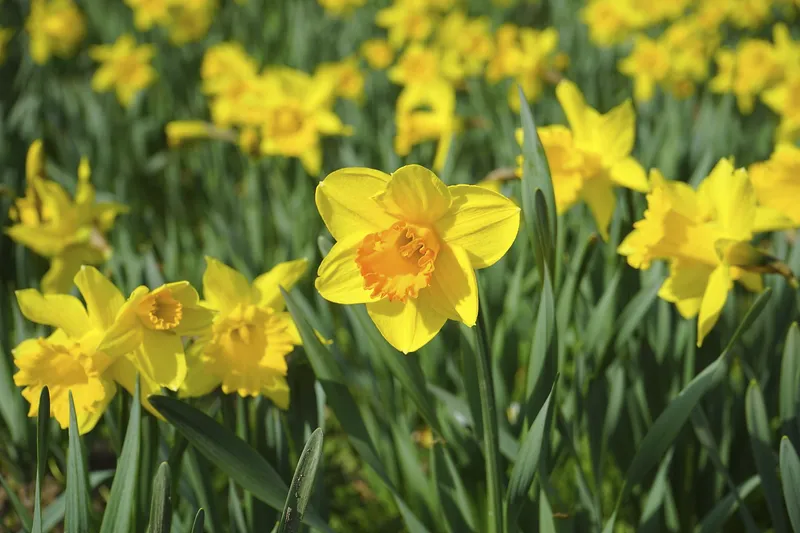
Of many plants, the Daffodil remains a highlight in a sunny garden. During the growing season, you can find some of them with bright orange colors. The individual flowers are great for cuttings.
These sun plants look great in window boxes, containers, and gardens. It grows as a bulb, and adding some organic matter helps encourage growth with great blooms. The Daffodil loves direct sunlight to part shade.
The plant reaches two feet tall and grows in USDA zones 4 to 8. You find various combinations of orange, white, yellow, and orange-pink flowers in the same genus. Plant them about five inches deep in late fall to early spring to cover them with soil.
These bulbs grow well in tropical environments and are drought, dry soil, and clay soil tolerant. You grow them as an annual bloom with their grass-like foliage. After the leaves emerge, you see a long green flower stalk with buds open to give eye candy.
The plant will attract birds to the garden, making beautiful cut flowers.
Flowering Quince a Delightful Shrub

If you live in the USDA zones 4 to 8, add color to your garden with the Flowering Quince. The deciduous shrub displays bright pink-red flowers. The plant attracts butterflies and other pollinators. It reaches full bloom in mid-spring, as most plants still wake up.
You can grow these magnificent full-sun plants in a sunny garden with much sun exposure. It can even handle some light shade. It grows in different soil conditions but does prefer soil that drains well.
The shrub blooms on old wood and needs no major pruning than removing damaged or dead branches. It is an attractive focal point used on borders or as a hedge. In addition, you can use it as a stand-alone shrub.
The flowers turn pinkish-red and produce clusters of large fleshy fruit known as the Quince fruit. Unfortunately, the edible fruit is bitter, and the branches have thorns.
Inkberry a Holly Shrub
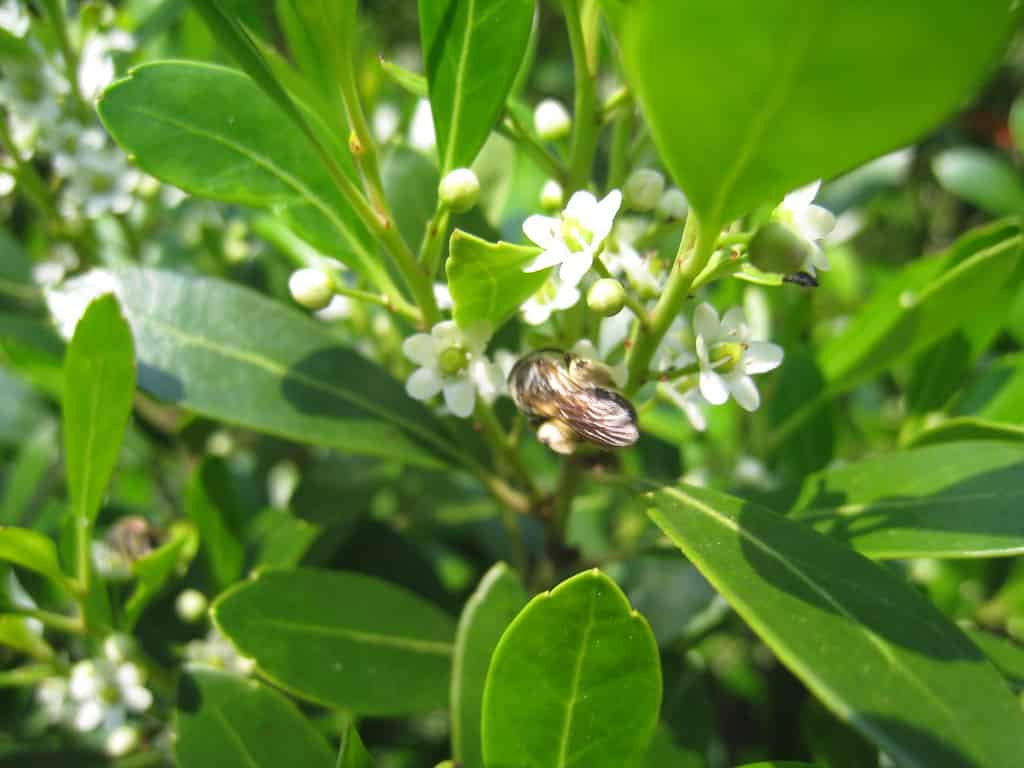 inkberry @flickr
inkberry @flickr
The Inkberry resembles the Holly with lanceolate foliage, producing blackberries attracting birds. The Ilex glabra is a broadleaf evergreen that flourishes in direct sun and some afternoon shade.
The Inkberry reaches up to 8 feet tall and is suitable for USDA zones 4 to 9. The most significant difference between Inkberry and Holly is that it does not have prickly leaves. Therefore, it is ideal for growing as a hedge or on borders allowing them to spread.
The evergreen spread with underground suckers, forming a colony with lush green foliage. You can control the growth to prevent unwanted spread. The leaves are smooth yet glossy, with flowers in late spring and summer.
After flowering, the female plants produce inky black fruits eaten by the birds. It prefers a spot with moist soil.
Lantana Displays a Summer Bloom

Lantana is a deciduous shrub that reaches up to six feet tall and grows best in the hardiness zones 8 to 10. You see the blooms in summer forming clusters of bright yellow, orange, white, and pink flowers.
Most Lantana varieties are hardy in the warmer tropical climates, but you can find some that can survive the cold in Zone 7. A hard pruning every winter after the first frost and a layer of mulch will protect your Lantana from the cold.
Lantana prefers a spot with full sun and medium moisture in well-draining soil. As a result, you see flowers from mid-summer, and the clusters remain small in multicolor. The flowers range in color from pink, purple, yellow, and orange and sometimes appear as a single cluster.
It has distinct blooms with a spicy fragrance and lures butterflies and hummingbirds.
Marigold Very Popular Full Sun Plants

Nothing stands out more than the Marigold for cheerful blooms in your sunny garden. Tagetes patula grows as an annual in most parts of the United States. It reaches 1.5 feet tall and is suitable for zones 2 to 11.
It is grown as a bedding plant and available as seedlings to plant in spring. You can grow them from seeds directly in the ground. The flowers are vibrant and cheerful in shades of orange and yellow.
Marigolds attract birds and butterflies, but deer and rabbits dislike the plant. The leaves and flowers have a distinctive scent and are long-lasting and suitable for cut flowers. If you want to fill up some gaps in the landscape, this plant is an excellent choice.
Place Marigolds in direct light to bloom all through summer until the frost in fall.
Monkey Grass Displays Tall Purple Buds
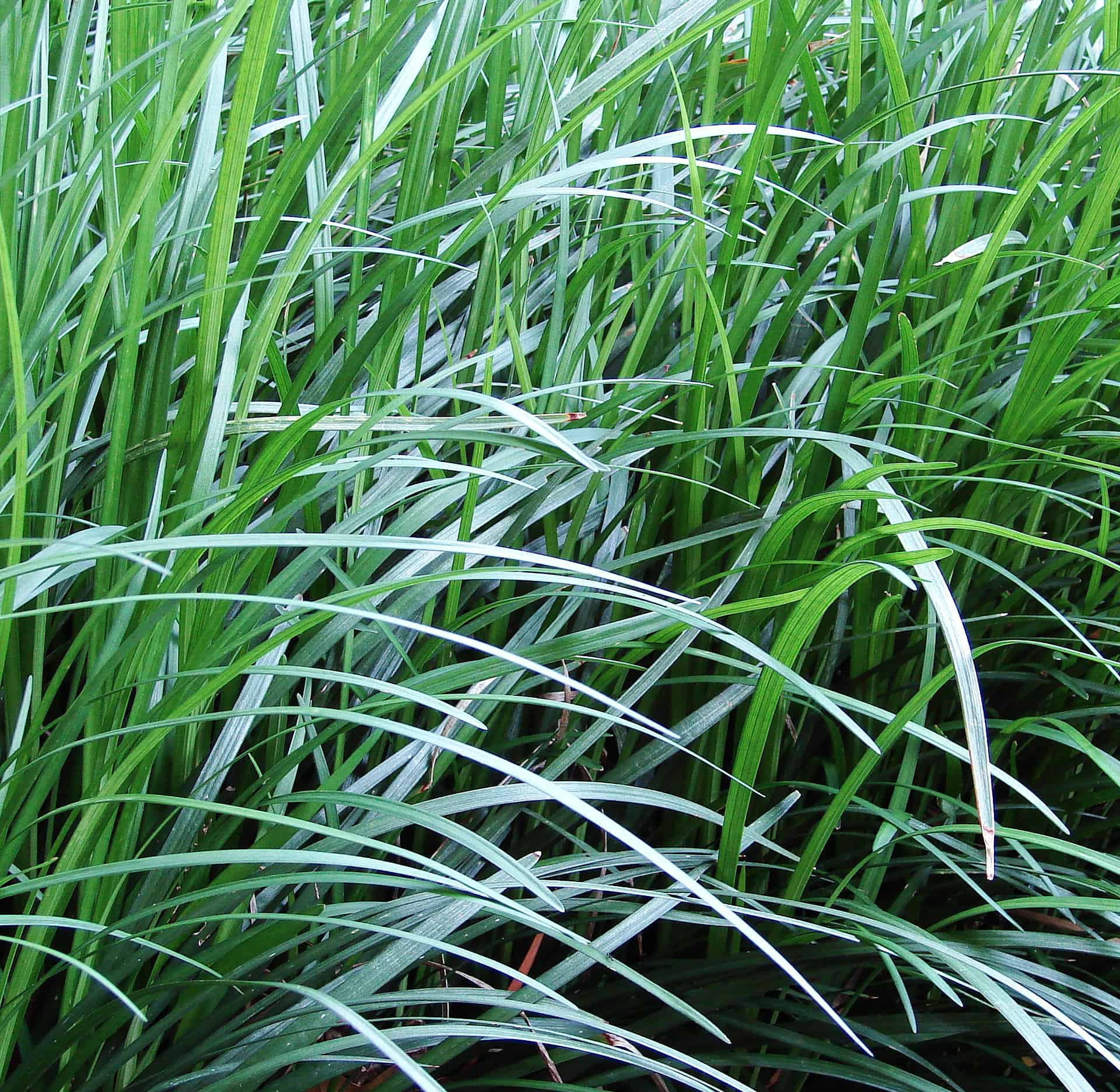
Monkey Grass is a perennial that loves direct sunlight to dappled light growing up to one foot tall in zones 5 to 10. Some gardeners refer to the grass as Lilyturf or Liriope. The grass can tolerate dry to wet soil and spreads slowly outwards with underground runners.
It is an excellent plant to help control erosion and grows in spots where other plants do not succeed. It grows as a thick grass with long green foliage remaining evergreen in tropical environments.
The foliage forms dense clusters; in late summer, you see tall spikes with tiny pale purple blooms.
The Rose of Sharon, a Delightful Shrub

Rose of Sharon hibiscus plants reaches up to 12 feet tall and grow well in the hardiness zones 5 to 8. It is a low-maintenance shrub that makes for a beautiful hedge or can be used as an accent plant. The blooms come out in mid-summer to early fall.
The flowers are large in purple or pink with a dark pink center.
The Rose of Sharon is attractive, bringing butterflies and bees to the garden. These shrubs thrive in full sun and prefer moist soil but are drought-tolerant to some extent. However, it self-seeds, and you must control them to prevent them from overtaking the garden.
Stonecrop Ground Cover Loves Sun Exposure

Sedum produces small silvery foliage that is succulent and needs not have much water. It is easy to grow plants that grow in a poor soil type like sand. Still, it does need well-draining soil and full sun to grow its best.
For year-round vegetation, you can grow Sedum in rock gardens or a dry border. Then, in spring, you see clusters of yellow-green flowers emerging that are not showy but remain attractive. It propagates easily through cuttings and does not need special care.
Yarrow, a Pale Green Feathery Plant

The Yarrow has a dome shape with feathery green leaves and small flowers in white. The plant thrives in full sun and grows up to three feet tall in zones 3 to 9—Plant Yarrow in well-draining soil with a lot of sun exposure.
Still, it is a vigorous grower making for an excellent filler in garden gaps, but you must pull out the new shoot to prevent them from spreading beyond the boundary. The hardy plant is drought tolerant and can live in poor soil types.
The flowers attract pollinators, and you find them blooming yellow, pink, or white flowers. Still, the foliage can die back in mid to late summer in a dry area in the hot afternoon sun.
Zinnias Display Showy Flowers in The Garden

Zinnias grow as an annual and reaches up to four feet tall. The flowers attract pollinators to the garden and die after the first frost. Yet, the blooms make for beautiful cut flowers and multiply from seeds.
Plant the seed in a sunny spot with enough sun exposure and water them a little to get started. Zinnias are annual shrubs known for their solitary stems and colorful blooms.
Whether you want to buy, sell, or simply reach out to other plant enthusiasts, Plantly is the right place to be!


